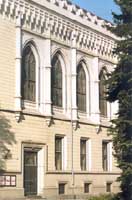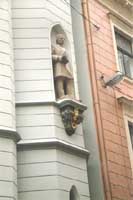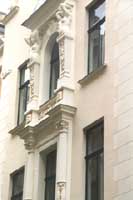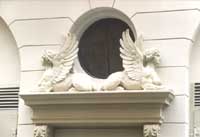Amatu Street is in the Old City (from skunu Street to Meistaru Street). Its total length is 95 meters. The street developed in the 13th century (from Kurpnieku - now Skunu Street to fortification wall).
The Franciscan Abbey (1258) was situated on this Street, therefore this street was called the street 'opposite to grey brothers'; in the 14th century, when the Great Guild and Small Guild were built at the end of the street, this street was called street "towards Guilds" (platea sicut itur ad studam gilde - Latin, 1385; gildestaven strate - Lower Dutch, 1497). Later the name of street changed to
Gildes Street, which survived until 1936, when the Street was renamed Amatu Street.
Until mid-nineteenth century Riga had survived all the typical features of Medieval city-fortress.
The oldest part was the Old City and the Citadel surrounded by moats, ramparts and bastions. A rampart esplanade surrounded this core in both coasts of the Daugava. Any other place outside this was suburbs, where, according to fortification requirements, only timber buildings could be built. In fact, the development of Riga stopped in the mid-nineteenth century, although the need for new public and manufactory buildings was high; only 2 stone buildings and 10 timber buildings were built in 1855; 11 timber houses in 1856; 19 timber houses in 1857. This situation could be partly explained by the fact that in the Old City, where all administrative, economical and social life took place, new buildings were very expensive. They were built, destroying old capital building. In the mid-nineteenth century there were only two huge public buildings in the Old City; their size were in contrast with the character of the surrounding Medieval constructions. It was the Stock Exchange, architect H.Bose, 1852-55; and Great Guild, architect K.Beine, 1855-59.
The new buildings in the suburbs could be possible only in periphery, because the land near fortress (esplanade) was densely built-up with one-storey or two-storey timber houses.
The traffic between the "City" and the suburbs was quite inconvenient. It took place only via three gates in the fortress ramparts. Riga had no constant bridge across the Daugava. High fortification walls hampered the circulation of air change on the streets, and the water in the moats smelt disgusting and caused an epidemic.
Administrative building and dwelling house of Great Guild on 4 Amatu Street was built in 1903 after the project of architect W.L.N.Bokslaff.

































